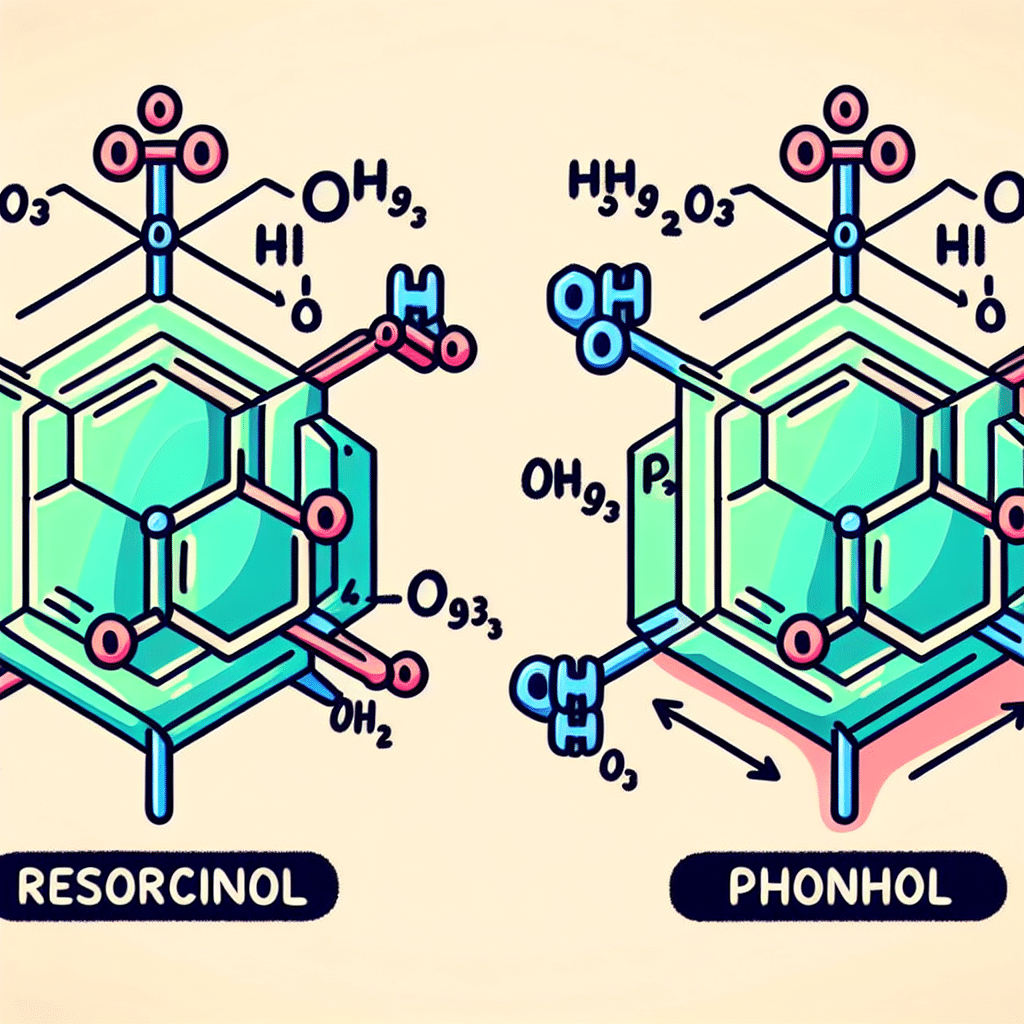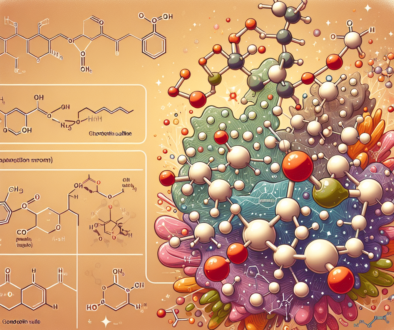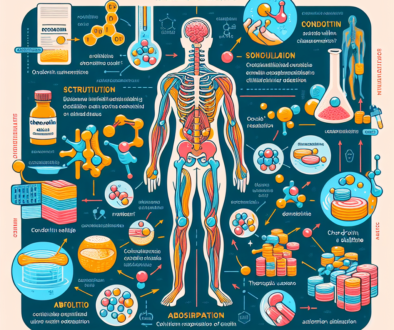Is Resorcinol a Phenol? Understanding
-
Table of Contents
- Resorcinol vs. Phenol: Understanding the Chemical Differences
- What is Phenol?
- What is Resorcinol?
- Is Resorcinol a Phenol?
- Chemical Structure and Properties
- Applications of Phenol and Resorcinol
- Health and Safety Considerations
- Environmental Impact
- Conclusion: Key Takeaways
- Discover ETChem’s Protein Products
Resorcinol vs. Phenol: Understanding the Chemical Differences
When it comes to organic chemistry, the terms “resorcinol” and “phenol” often come up in discussions about chemical compounds. While both are related and share some similarities, they are distinct substances with unique properties and applications. In this article, we will delve into the world of organic chemistry to understand whether resorcinol is a phenol, explore their differences, and examine their uses in various industries.
What is Phenol?
Phenol, also known as carbolic acid, is an aromatic organic compound with the chemical formula C6H5OH. It consists of a phenyl group (C6H5) bonded to a hydroxyl group (OH). Phenol is known for its antiseptic properties and was historically used as a disinfectant. Today, it serves as a precursor to many materials and a very important industrial compound.
What is Resorcinol?
Resorcinol, on the other hand, is a dihydroxy phenol with the chemical formula C6H4(OH)2. It has two hydroxyl groups attached to the benzene ring, making it a dihydric phenol. Resorcinol is used in various applications, including as a bonding agent in wood products and in the synthesis of pharmaceuticals and dyes.
Is Resorcinol a Phenol?
Yes, resorcinol is a type of phenol. Specifically, it is a derivative of phenol where two hydrogen atoms on the benzene ring are replaced by hydroxyl groups. This substitution leads to changes in the chemical and physical properties of resorcinol compared to phenol.
Chemical Structure and Properties
The chemical structure of a compound determines its properties and reactivity. Phenol and resorcinol differ in their structure, which accounts for their distinct characteristics:
- Phenol: Has a single hydroxyl group attached to the benzene ring, making it a monohydroxy phenol.
- Resorcinol: Contains two hydroxyl groups on the benzene ring at positions 1 and 3, classifying it as a dihydroxy phenol.
These structural differences affect their boiling points, solubility, and reactivity. Resorcinol, for instance, has a higher boiling point and is more soluble in water than phenol due to the presence of additional hydrogen bonds.
Applications of Phenol and Resorcinol
Both phenol and resorcinol have a wide range of applications, but they are used in different contexts due to their varying properties:
- Phenol: Used in the production of plastics, such as polycarbonate and epoxy resins, as well as in the manufacture of pharmaceuticals, including aspirin and other drugs.
- Resorcinol: Employed in the production of resins, particularly for wood adhesives, and in the synthesis of dyes, UV absorbers, and pharmaceuticals.
Health and Safety Considerations
Both phenol and resorcinol are toxic and can cause irritation upon contact with skin or eyes. They must be handled with care, and appropriate safety measures should be taken during their use:
- Phenol: Can cause severe burns and systemic toxicity if ingested or absorbed through the skin.
- Resorcinol: May lead to skin irritation and sensitization with prolonged exposure.
It is crucial for industries that use these chemicals to follow strict guidelines to ensure worker safety and environmental protection.
Environmental Impact
The production and disposal of phenol and resorcinol can have environmental implications. Both compounds are considered pollutants and can have detrimental effects on aquatic life if released into water bodies. Therefore, industries are required to treat waste containing these compounds before disposal.
Conclusion: Key Takeaways
In summary, resorcinol is indeed a phenol, specifically a dihydroxy derivative of phenol. While both share a common aromatic ring structure, the presence of an additional hydroxyl group in resorcinol alters its properties and applications. Understanding the differences between these two compounds is essential for their safe and effective use in various industries. Here are the key takeaways:
- Resorcinol is a type of phenol with two hydroxyl groups.
- The structural differences between phenol and resorcinol lead to distinct physical and chemical properties.
- Both compounds have diverse industrial applications but require careful handling due to their toxicity.
- Environmental considerations are crucial when dealing with phenol and resorcinol.
Discover ETChem’s Protein Products
If you’re in the market for high-quality protein products, consider exploring ETChem’s offerings. ETChem is a reputable manufacturer and supplier of various types of collagen, including marine, fish, bovine, chicken, and types I, II, and III collagen. Their products are known for their neutral taste and instant solubility, making them suitable for a wide range of industries such as nutraceuticals, pharmaceuticals, cosmeceuticals, veterinary, and food and beverage sectors.
ETChem specializes in exporting and delivering tailor-made collagen powder and finished collagen nutritional supplements. They cater to the needs of distributors, traders, and manufacturers worldwide, providing comprehensive protein solutions for food and beverage, sports nutrition, weight management, dietary supplements, health, and wellness products.
As a trusted partner of global food and beverage brands and Fortune 500 companies, ETChem upholds China’s reputation in the international market. For more information or to sample their products, please contact them and email karen(at)et-chem.com today.
About ETChem:
ETChem, a reputable Chinese Collagen factory manufacturer and supplier, is renowned for producing, stocking, exporting, and delivering the highest quality collagens. They include marine collagen, fish collagen, bovine collagen, chicken collagen, type I collagen, type II collagen and type III collagen etc. Their offerings, characterized by a neutral taste, instant solubility attributes, cater to a diverse range of industries. They serve nutraceutical, pharmaceutical, cosmeceutical, veterinary, as well as food and beverage finished product distributors, traders, and manufacturers across Europe, USA, Canada, Australia, Thailand, Japan, Korea, Brazil, and Chile, among others.
ETChem specialization includes exporting and delivering tailor-made collagen powder and finished collagen nutritional supplements. Their extensive product range covers sectors like Food and Beverage, Sports Nutrition, Weight Management, Dietary Supplements, Health and Wellness Products, ensuring comprehensive solutions to meet all your protein needs.
As a trusted company by leading global food and beverage brands and Fortune 500 companies, ETChem reinforces China’s reputation in the global arena. For more information or to sample their products, please contact them and email karen(at)et-chem.com today.





